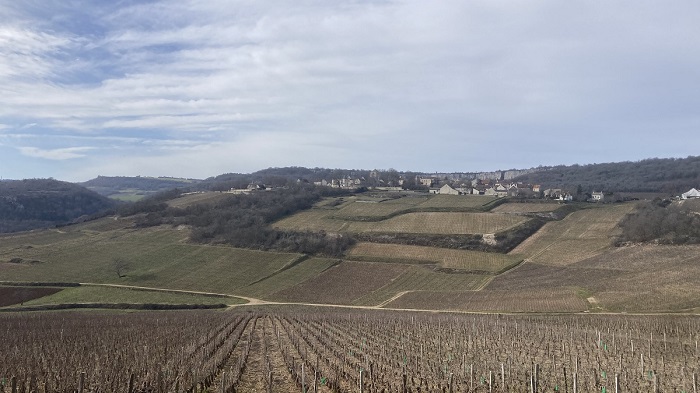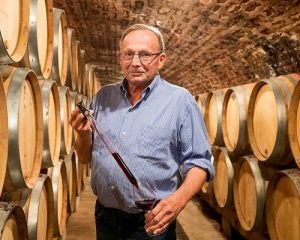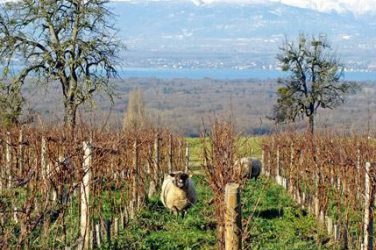
Have you noticed that when you go for a stroll through the vineyards the landscape is never the same? That is what makes the charm of visiting our French wine regions. Vineyards are cultivated differently within the same appellation, from one parcel to the next, all the while reflecting the specific nature of the winegrower’s approach. A recurring question arises when we raise the issue of sustainable farming with our winegrowers: Is cover cropping or tilling better along the rows of vines? Four domains with different approaches provide insights into this question: Clotilde Davenne in Chablis, Clotilde Legrand in Saumur and the domains of the Amoreau Family (Château Le Puy and Closerie Saint Roc in Bordeaux).
WHY TILL THE SOIL?
Clotilde Davenne started making wine in Chablis in 1992, when she planted her first Chardonnays. Today, her domain stretches over some 30 hectares, across the villages of Saint-Bris, Chablis and Irancy. Clotilde creates some of the most beautiful expressions of the Kimmeridgian limestone terroirs thanks to a great many parcels, different grape varieties (a rare occurrence in Burgundy with Pinot Noir, César, Chardonnay, Aligoté and Sauvignon Blanc), and varying ages. We had the opportunity to chat with her and to find out more about her winemaking practices.
Clotilde has opted for tilling when it comes to her land. Firstly, because her plots typically present steep gradients of up to 50%! Tilling the ground therefore addresses an initial technical challenge as her tractor would be in danger of slipping if the ground was covered with grass.
Secondly, Clotilde is reluctant to encourage excess competition between grass and her vines (especially in the case of young plants, with their shallower roots). “It’s important to keep the grass under control between April and June.” Indeed, grass absorbs water from the soil, preventing it from reaching the roots of the vines and hindering their growth.
Clotilde ponders the question of cover cropping some of her vines located in the plains. “We ask ourselves questions every year” – as you can imagine – the winegrowing business is constantly evolving and challenged.
Finally, tilling can prove beneficial to aerate the soil, as well as to improve its overall performance through organic fertilisers, for example.
IS COVER CROPPING VINES THE ANSWER?
A few decades ago, when a parcel was covered in grass, it was commonly assumed that ‘the winegrower was not taking care of their vineyard’. When the family of Clotilde Legrand, a winegrower in Saumur, decided to let the grass grow in their plots 35 years ago, it caused somewhat of a small local stir!
Convinced of the benefits of cover cropping, Clotilde describes her approach. One of her primary objectives is to limit yields. It rains a lot in the Loire Valley, and “the excess water will feed the grass, instead of swelling the grapes too much”. Cover cropping helps not only stabilises the ground, but it also limits the risk of erosion (which is accentuated by tilling). The ground is very much alive with rabbit holes, molehills. “Our grass cover is intact, there are poppies, dandelions, etc. Our vines are a haven for biodiversity.”
Harold Langlais, who runs the Amoreau family’s vineyards in Bordeaux (Château le Puy and Closerie Saint Roc), offers further insight into this minimalist farming approach.
He says, “Regular soil tilling diminishes the number of earthworms, resulting in a drop in soil fertility, and an unregulated increase in bacteria that slows down the mineralisation process, which reveals the expression of the terroir”. Depending on the depth at which the soil is tilled, “this can impact the mycorrhiza system (bacterial + root symbiotic association) that connects each of the vine plants together…The mycorrhiza system enables each grapevine to multiply its soil exploration capacity a thousandfold. You quickly realise the impact on the health of the vine and its ability to produce grapes rich in essential vitamins and minerals.”
At the domains, Harold therefore advocates uncontrolled cover cropping for the greater part of the year, along with the odd mowing and dispersing the grass on the ground. “This encourages microbial development on the surface, favouring the breakdown of vegetal matter present on the soil. This decomposition feeds and stimulates the entire bacterial chain, right down to the earthworm. In turn, this results in a natural and ‘permanent’ state of fertility of the soil, as well as a micro-bacterial process that guarantees the expression of the soil’s elements in the vines (the so-called terroir effect). Surface scraping of the soil (10 cm) can be performed in the spring to encourage excess water to evaporate.”
Finally, minimal interference prevents the release of CO2 stored by the grass cover. The Ecocert carbon footprints of Château Le Puy and the Closerie Saint Roc have therefore been positive since 2011 (which means that their vineyards absorb more CO2 than they release).
Ultimately, choosing between cover cropping or tilling the soil seems to be down to each winegrower and subject to different terroirs and weather conditions. The winegrower knows their vineyard, they keep a watchful eye on it and act accordingly. Unceasingly having to adapt to internal (resources, techniques) or external constraints (weather changes, vintage variations), winegrowers also have to consider their own beliefs, based on what they deem to be good or bad.
See organic, natural and biodynamic wines
See wines from Clotilde Davenne, Clotilde Legrand, Château Le Puy, Closerie Saint Roc



